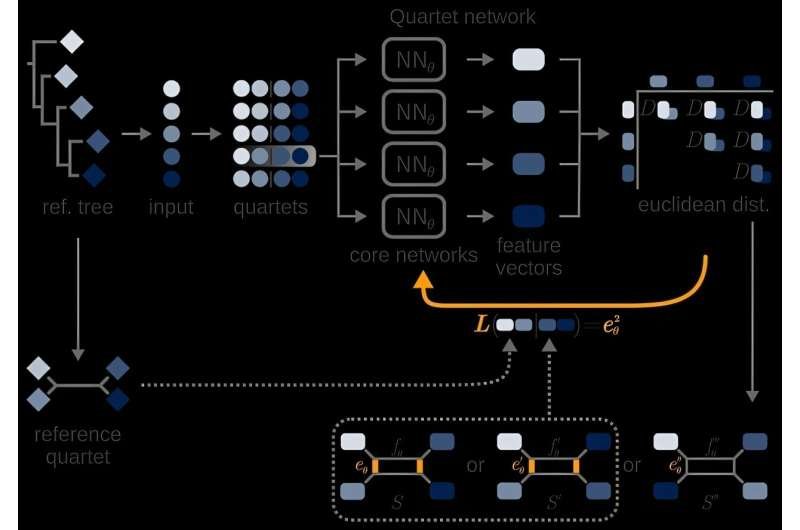AI Research
Meet Indian-origin neuroscientist Akshay Jagadeesh who joined OpenAI as researcher to turn decades of brain research into AI breakthroughs |

Akshay Jagadeesh, an Indian-origin neuroscientist, has recently joined Sam Altman’s OpenAI as a research resident, marking a significant transition from academic neuroscience to cutting-edge artificial intelligence research. With nearly a decade of experience studying the human brain, Jagadeesh brings expertise in computational neuroscience and psychology, having earned a PhD from Stanford University and completed a postdoctoral fellowship at Harvard Medical School. He has also conducted research at prestigious institutions like UC Berkeley and Humboldt University in Berlin. At OpenAI, Jagadeesh will focus on two critical areas: advancing AI safety to ensure systems are reliable and aligned with human values, and exploring how AI can accelerate medical and scientific breakthroughs, bridging the gap between human cognition and technological innovation.
Akshay Jagadeesh’s academic foundations: From neuroscience to computational psychology
Akshay Jagadeesh’s academic journey has been focused on understanding the human brain from both a biological and computational perspective. He earned his PhD in Computational Neuroscience and Psychology from Stanford University, one of the world’s leading institutions in brain research. His doctoral studies explored how neural activity underpins human cognition, perception, and behavior, often using computational models to simulate complex brain functions.After his PhD, Jagadeesh expanded his research during a postdoctoral fellowship at Harvard Medical School, where he worked for nearly three years. During this period, he contributed to studies that bridged neuroscience with practical applications in medicine and cognitive science. Beyond these roles, he has conducted research at the University of California, Berkeley, and Humboldt University in Berlin, further diversifying his expertise in neural modeling and behavioral science.“My career began with a focus on understanding how the brain enables perception and behavior, using computational models to connect neural activity with cognition,” Jagadeesh wrote on LinkedIn. “After nearly a decade of academic research… I have transitioned into industry to apply these insights more broadly.”
Jagadeesh’s transition to OpenAI as researcher
Jagadeesh’s move to OpenAI marks a significant shift from academic neuroscience to cutting-edge artificial intelligence research. His role as a research resident focuses on two main areas: ensuring that AI systems are safe, reliable, and aligned with human values, and exploring how AI can accelerate breakthroughs in health and medicine.This transition is particularly meaningful because it reflects the growing convergence of neuroscience and AI. Jagadeesh’s understanding of complex brain networks and cognitive processes allows him to contribute to the development of AI systems that mimic or support human decision-making while remaining safe and ethical.“I’m thrilled to join OpenAI as a research resident, focusing on safety research and AI for health… building AGI to accelerate medical progress and scientific research,” Jagadeesh shared on social media.
How Akshay Jagadeesh is advancing safe AI and medical breakthroughs
At OpenAI, Jagadeesh will dedicate his efforts to two critical goals. First, he will work on AI safety, ensuring that artificial intelligence behaves predictably, ethically, and in alignment with human values. This is increasingly important as AI technologies become more capable and widely adopted.Second, he will explore the application of AI in health and medicine. By leveraging his neuroscience background, Jagadeesh aims to create tools that accelerate scientific discovery, improve diagnostics, and contribute to human well-being. His work could lead to innovations in areas such as drug discovery, medical imaging, and personalized healthcare.“I am especially motivated by the opportunity to translate my background in neuroscience and modeling into building AI tools that both deepen scientific discovery and contribute to human well-being,” he said.
AI Research
Equipping artificial intelligence with the lens of evolution

Artificial intelligence is now better than humans at identifying many patterns, but evolutionary relationships have always been difficult for the technology to decipher. A team from the Bioinformatics Department at Ruhr University Bochum, Germany, working under Professor Axel Mosig has trained a neural network to tackle this issue.
The AI can relate any data from different species in an evolutionary relationship and identify which characteristics have developed in what manner throughout the course of evolution.
“Our approach lets artificial intelligence look at data through the lens of evolution, in a way,” explains Vivian Brandenburg, lead author of the report published in the Computational and Structural Biotechnology Journal on August 22, 2025.
Providing prior knowledge about the ancestry tree
“Most previous AI algorithms have a hard time analyzing biological data through an evolutionary lens, because they don’t know what to look for and get confused by random patterns,” says Mosig. The team has provided its AI with prior knowledge of the phylogenetic trees of the species being analyzed.
This approach is based on classifying groups of four species into the presumably correct ancestry tree when training the AI. The tree contains information about close and distant relationships. “If all groups of four are correctly arranged, the entire ancestry tree can come into place like a puzzle,” explains Luis Hack, who also worked on the study. “The AI can then look in the sequences to identify patterns that have evolved throughout this tree.”
The kicker: This method works not only for genetic sequence data, but also for any other type of data, such as image data or structural patterns of biomolecules from various species. After the bioinformaticists from RUB initially established the approach for DNA sequence data as part of their current work, they are already exploring its applicability for image data.
“For example, you could reconstruct hypothetical images of evolutionary predecessor species,” says Hack, explaining the method’s potential for future projects.
More information:
Vivian B. Brandenburg et al, A quartet-based approach for inferring phylogenetically informative features from genomic and phenomic data, Computational and Structural Biotechnology Journal (2025). DOI: 10.1016/j.csbj.2025.08.015
Provided by
Ruhr University Bochum
Citation:
Equipping artificial intelligence with the lens of evolution (2025, September 10)
retrieved 10 September 2025
from https://phys.org/news/2025-09-equipping-artificial-intelligence-lens-evolution.html
This document is subject to copyright. Apart from any fair dealing for the purpose of private study or research, no
part may be reproduced without the written permission. The content is provided for information purposes only.
AI Research
Meta Details AI Research Efforts at TBD Lab

This article first appeared on GuruFocus.
Meta Platforms Inc. (META, Financials) is advancing its artificial intelligence ambitions through a small research group called TBD Lab, which consists of a few dozen researchers and engineers, Chief Financial Officer Susan Li said Tuesday at the Goldman Sachs Communacopia + Technology conference.
The unit, whose placeholder name has stuck, is tasked with developing next-generation foundation models over the next one to two years. Li described the team as talent-dense and said its work would help push Meta’s AI portfolio closer to the frontier.
TBD Lab is one of four groups within Meta’s Superintelligence Labs, created earlier this year after the company reorganized its AI strategy. The other groups include a products team anchored by the Meta AI assistant, an infrastructure team, and the Fundamental AI Research (FAIR) lab.
The restructuring followed senior staff departures and what was seen as a muted reception for Meta’s latest open-source Llama 4 model. CEO Mark Zuckerberg has since taken a direct role in recruiting AI talent, making offers to startups and contacting candidates himself through WhatsApp with multimillion-dollar packages.
Investors will look to Meta’s next earnings update for signs of progress in AI development and how new models could fit into its products and services.
AI Research
Commanders vs. Packers NFL props, SportsLine Machine Learning Model AI picks: Jordan Love Over 223.5 passing

The NFL Week 2 schedule gets underway with a Thursday Night Football matchup between NFC playoff teams from a year ago. The Washington Commanders battle the Green Bay Packers beginning at 8:15 p.m. ET from Lambeau Field in Green Bay. Second-year quarterback Jayden Daniels led the Commanders to a 21-6 opening-day win over the New York Giants, completing 19 of 30 passes for 233 yards and one touchdown. Jordan Love, meanwhile, helped propel the Packers to a dominating 27-13 win over the Detroit Lions in Week 1. He completed 16 of 22 passes for 188 yards and two touchdowns.
NFL prop bettors will likely target the two young quarterbacks with NFL prop picks, in addition to proven playmakers like Terry McLaurin, Tucker Kraft and Josh Jacobs. Green Bay’s Jayden Reed has been dealing with a foot injury, but still managed to haul in a touchdown pass in the opener. The Packers enter as a 3.5-point favorite with Green Bay at -187 on the money line. Before betting any Commanders vs. Packers props for Thursday Night Football, you need to see the Commanders vs. Packers prop predictions powered by SportsLine’s Machine Learning Model AI.
Built using cutting-edge artificial intelligence and machine learning techniques by SportsLine’s Data Science team, AI Predictions and AI Ratings are generated for each player prop.
For Packers vs. Commanders NFL betting on Monday Night Football, the Machine Learning Model has evaluated the NFL player prop odds and provided Bears vs. Vikings prop picks. You can only see the Machine Learning Model player prop predictions for Washington vs. Green Bay here.
Top NFL player prop bets for Commanders vs. Packers
After analyzing the Commanders vs. Packers props and examining the dozens of NFL player prop markets, the SportsLine’s Machine Learning Model says Packers quarterback Love goes Over 223.5 passing yards (-112 at FanDuel). Love passed for 224 or more yards in eight games a year ago, despite an injury-filled season. In 15 regular-season games in 2024, he completed 63.1% of his passes for 3,389 yards and 25 touchdowns with 11 interceptions.
In a 30-13 win over the Seattle Seahawks on Dec. 15, he completed 20 of 27 passes for 229 yards and two touchdowns. Love completed 21 of 28 passes for 274 yards and two scores in a 30-17 victory over the Miami Dolphins on Nov. 28. The model projects Love to pass for 259.5 yards, giving this prop bet a 4.5 rating out of 5. See more NFL props here, and new users can also target the FanDuel promo code, which offers new users $300 in bonus bets if their first $5 bet wins:
How to make NFL player prop bets for Washington vs. Green Bay
In addition, the SportsLine Machine Learning Model says another star sails past his total and has four additional NFL props that are rated four stars or better. You need to see the Machine Learning Model analysis before making any Commanders vs. Packers prop bets for Thursday Night Football.
Which Commanders vs. Packers prop bets should you target for Thursday Night Football? Visit SportsLine now to see the top Commanders vs. Packers props, all from the SportsLine Machine Learning Model.
-

 Business2 weeks ago
Business2 weeks agoThe Guardian view on Trump and the Fed: independence is no substitute for accountability | Editorial
-
Tools & Platforms4 weeks ago
Building Trust in Military AI Starts with Opening the Black Box – War on the Rocks
-

 Ethics & Policy1 month ago
Ethics & Policy1 month agoSDAIA Supports Saudi Arabia’s Leadership in Shaping Global AI Ethics, Policy, and Research – وكالة الأنباء السعودية
-

 Events & Conferences4 months ago
Events & Conferences4 months agoJourney to 1000 models: Scaling Instagram’s recommendation system
-

 Jobs & Careers2 months ago
Jobs & Careers2 months agoMumbai-based Perplexity Alternative Has 60k+ Users Without Funding
-

 Podcasts & Talks2 months ago
Podcasts & Talks2 months agoHappy 4th of July! 🎆 Made with Veo 3 in Gemini
-

 Education2 months ago
Education2 months agoMacron says UK and France have duty to tackle illegal migration ‘with humanity, solidarity and firmness’ – UK politics live | Politics
-

 Education2 months ago
Education2 months agoVEX Robotics launches AI-powered classroom robotics system
-

 Funding & Business2 months ago
Funding & Business2 months agoKayak and Expedia race to build AI travel agents that turn social posts into itineraries
-

 Podcasts & Talks2 months ago
Podcasts & Talks2 months agoOpenAI 🤝 @teamganassi





















